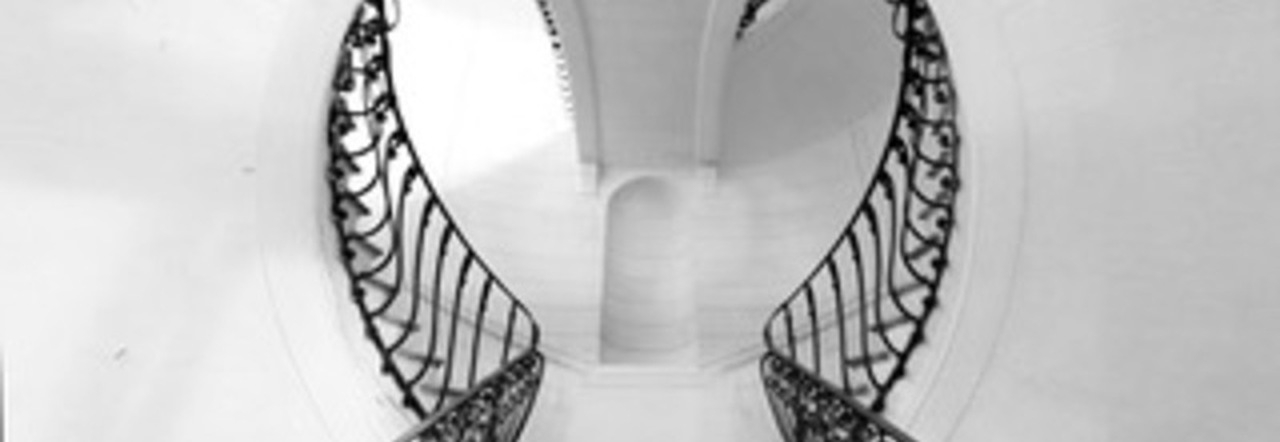Simone Florena's Photographic Exploration of Naples' Staircases at MIA Photo Fair

Wednesday 10 April 2024, 18:33
3 Minutes of Reading
From April 11 to 14 at the MIA Photo Fair in Milan - the most important international photography art fair in Italy, for the prestigious Antonia Jannone Gallery - Drawings of Architecture, the photos dedicated to the "stairs of Naples" by Simone Florena, an innovative and dynamic Neapolitan photographer. Florena presents at the MIA, in a dual photographic work, the decorative stairs of the most important historical Palaces of Naples (Palazzo Cimitile, Palazzo D'Afflitto, Palazzo Di Maio, Palazzo Palladino, Palazzo Mastelloni, Palazzo Persico, and Palazzo Serra di Cassano) in the 8 shots of "Perdersi", revisited from a completely original perspective and the functional ones, intended as a fundamental connection in a vertical city like Naples, which are reinterpreted in the 3 shots in maxi-format of "Scorciatoie", representative of unusual and particular views of the beautiful panoramic stairs of Moiariello and Pedementina. "Perdersi" - is a photographic revisitation of the so-called Sanfelician architectural model, truly unique in its kind, through an original look at the most important historical Palaces of Naples, in which it is possible to get lost completely losing the perspective related to the functionality of the stairs; "the ascent and descent", "the beginning and the end", of Escherian memory, which thus transform, thanks to their oval and welcoming shapes, into a whole, becoming an architecture in itself, with its own aesthetic autonomy identifying the beauty of the entire Palace. The photographic work on the stairs of Sanfelice, captured in black and white, is like a visual labyrinth that challenges orientation. Sinuous shapes and interplays of light intertwine in a photographic journey where one gets lost exploring the intrinsic mystery of the stairs that reveal architectural secrets. The Sanfelice stairs were not simply transitional elements, but places where space and perspective were skillfully exploited. Going up or down these stairs, one could enjoy dynamic views, contributing to creating a unique visual experience. Photographs taken in digital, whose vertical format suits the subjects (stairs) very well. The prints, all on Hahnemühle paper have a size of 100 cm in height by 70 cm in base and a limited edition of only 10 copies per image. "Scorciatoie" - the photographic series presents itself as a visual map that guides the discovery of urban corners and vertical paths, presenting them as hidden jewels that, once revealed, have the task of facilitating and improving daily life in a chaotic city like Naples. The homogeneous use of black and white together with the vertical format, creates a coherent visual narrative that emphasizes the architectural structures and the play of light and shadow. The images, although devoid of human presence, suggest the vital interaction with these spaces, inviting observers to recognize their functionality. The shots underline how change, dictated by time and the community, can also emerge in these places, highlighting the crucial role they play in connecting people and making urban life more sustainable and livable. Photographs taken on film (Kodak TRI-X 400) with Hasselblad Xpan, whose panoramic format exploited vertically, suits the subjects (stairs). The prints, all on Hahnemühle paper have a size of 180 cm in height by 70 cm in base and a limited edition of only 10 copies per image. Ferdinando Sanfelice, a famous Italian architect of the 18th century, distinguished himself for his innovative and creative work, particularly for the stairs within the palaces he designed. His genius emerged through the use of curved shapes and sinuous lines, giving a sense of dynamism and elegance to the spaces. Beyond being functional elements, the stairs of Sanfelice were conceived as true works of art, integrating harmoniously with the overall architecture of the buildings. His structural innovations included the exploration of advanced materials and construction techniques, which contributed to creating unique designs. Natural light was carefully considered, with openings and windows strategically placed to create luminous effects and suggestive atmospheres along the stairs.
© ALL RIGHTS RESERVED
This article is automatically translated
This article is automatically translated
